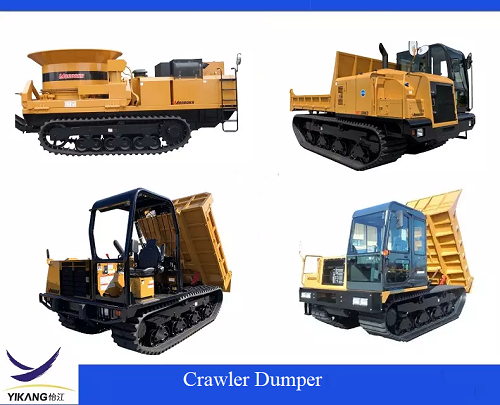In the ever-evolving field of engineering and construction, as projects become increasingly complex and terrains more challenging, there is a growing demand for efficient and reliable specialized transportation vehicles capable of navigating these environments. One of the most notable advancements in this field is the application of tracked undercarriage in construction transportation vehicles.
Understanding Track undercarriage
The track undercarriage, also known as a tracked vehicle, uses a continuous track design instead of traditional wheels. This design allows for a larger surface area in contact with the ground, which more evenly distributes the vehicle's weight. As a result, track chassis can traverse soft, uneven, or rough terrain that would typically impede wheeled vehicles. They are commonly used in a variety of applications, including construction, mining, agriculture, and military operations.
Advantages of tracked undercarriage
1. Enhanced traction and stability: The continuous track provides superior traction, allowing the vehicle to travel on slippery or loose surfaces without the risk of getting stuck. This is particularly beneficial in muddy, sandy or snowy conditions.
2. Reduce ground pressure: The tracked undercarriage distributes the vehicle's weight over a larger area, reducing ground pressure. This feature minimizes soil compaction and damage to sensitive environments, making it an ideal choice for construction sites and natural habitats.
3. Increase load-carrying capacity: The tracked undercarriage is designed to carry heavy loads and is suitable for transporting construction materials, heavy machinery and equipment. Their robust structure ensures they can handle demanding engineering tasks.
4. Versatility: Track-type undercarriage can adapt to various applications by being equipped with different attachments and tools. This versatility enables them to perform a wide range of functions, from transporting materials to operating as mobile cranes or excavators.
5. All-terrain capability: One of the most notable advantages of tracked undercarriage is their ability to travel on challenging terrains. Whether it's steep slopes, rocky surfaces or marshy areas, these vehicles can maintain mobility that traditional vehicles cannot.
Application in Engineering Transportation
The application of tracked undercarriage in engineering transportation vehicles covers a wide range of industries and functions.
1. In the construction industry, tracked undercarriage are used in various vehicles, including bulldozers, excavators and material transport vehicles. Tracked chassis are renowned on construction sites for their high load capacity and ability to adapt to rough terrain.
2. Mining Industry: The mining industry relies heavily on tracked undercarriage for transporting ores, equipment and personnel, and is renowned for its efficient material handling and transportation.
3. Agriculture: In agriculture, crawler tractors are used for plowing, tilling and transporting crops. Crawler tractors can operate on soft soil without causing compaction, which is crucial for maintaining soil health and optimizing crop yields.
4. Military and Defense: Tracked undercarriage are also commonly used in military applications. Vehicles such as tanks and armored personnel carriers use tracked chassis to enhance mobility across various terrains. Their robustness and stability are crucial for operation in challenging environments.
5. Disaster relief and recovery: Tracked chassis can be used to transport supplies, equipment and personnel to disaster-stricken areas. Tracked chassis can traverse areas filled with debris or flooded areas, making them a valuable asset in emergency response work.
The advancement of technology
Advanced technologies have been incorporated into the tracked undercarriage, further enhancing its performance. Innovations such as GPS navigation, remote control operation, and automation systems have improved the efficiency and safety of engineering transportation. For instance, GPS technology enables precise navigation in complex environments, while remote control systems allow operators to manage vehicles from a safe distance, especially in hazardous situations.
In addition, progress has been made in the development of hybrid and electric tracked undercarriage. These environmentally friendly alternatives reduce emissions and fuel consumption, aligning with the global push for sustainable practices in engineering and construction.








